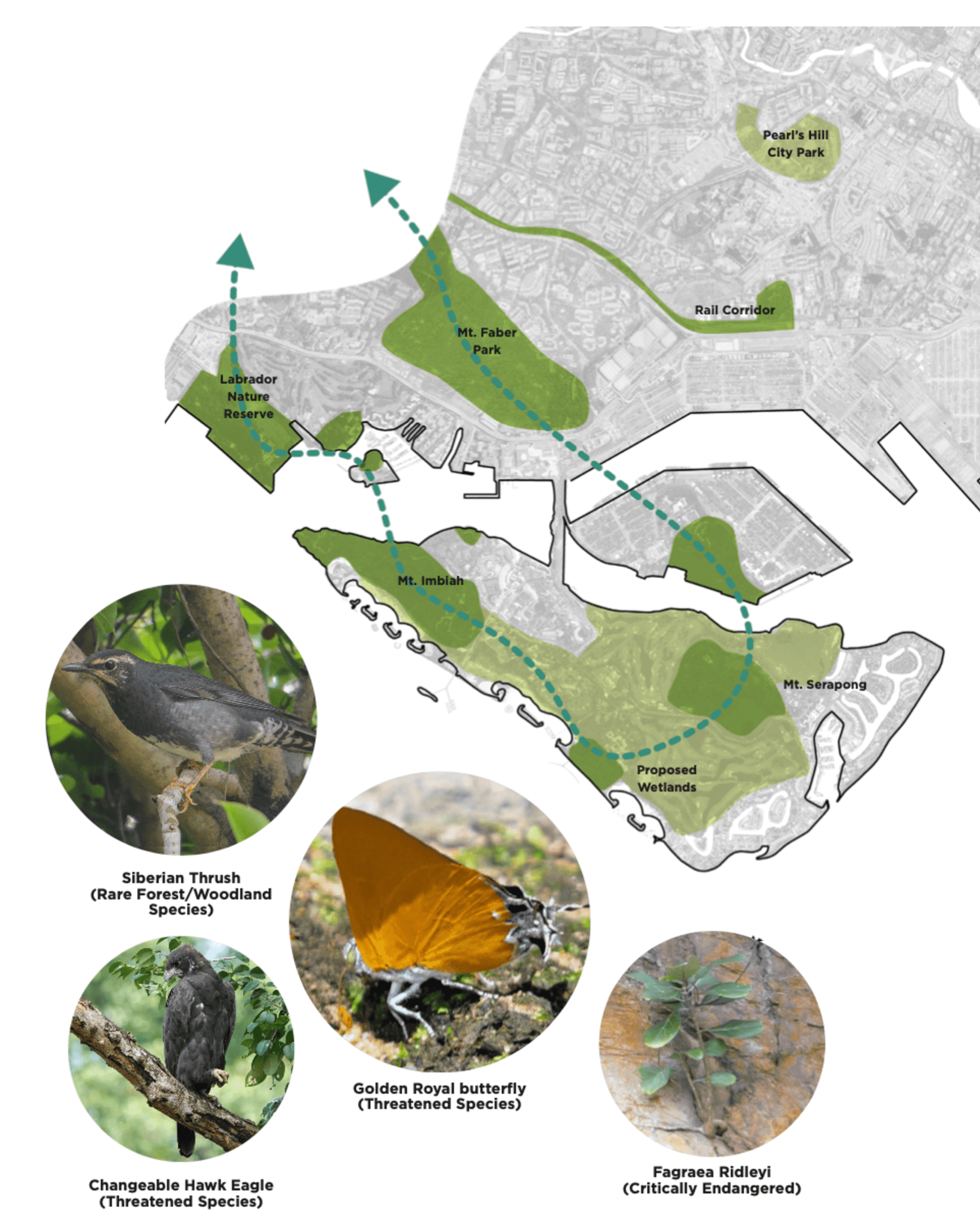-
Designer
WOHA Architects
-
Client
Sentosa Development Corporation
-
Location
Sentosa Island, Singapore
-
Scale
District
-
Status
Completed
-
Services
Ecological Placemaking, Biodiversity Survey & Impact Assessment, Ecosystem Service Assessment
-
Use
Infrastructure Development
-
Year
2023-2024
Sentosa Masterplanning, Singapore


Project Summary
As part of the multidisciplinary design team for re-imagining Sentosa Island, bioSEA served as the ecological consultant for the lead designer, WOHA Architects, influencing the landscape design and quantifying the ecological benefits behind the design.
To quantify habitat biodiversity for the proposed development, we used the Singapore Biodiversity Assessment Metric (SBAM), which measures biodiversity changes based on habitat area, condition, and ecological values.
We also analyzed the biodiversity change for the proposed development by calculating the existing species richness in both terrestrial and marine habitats based on past studies. Using our knowledge of species resilience, colonization, and migration, we projected changes in species abundance with the proposed development.
Using the Ecosystem Services Identification & Inventory (ESII) tool, carbon scaling equations and ENVI-met tool, bioSEA quantified changes of four ecosystem services in the study site in relation to the proposed development.
